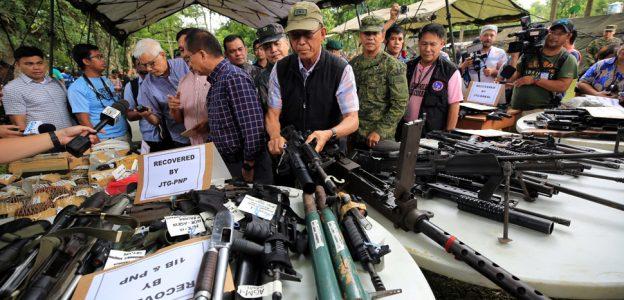
Philippines Muslim register touted as ISIS insurgency rages in Mindanao
Officials in the Philippines have suggested introducing special ID cards for Muslims as the army battles an Islamic State militant group (ISIS) insurgency.
Aaron Aquino, a chief superintendent in the country’s central Luzon district, said a country-wide register of Muslims could help authorities identify “undesirable individuals and terrorists.” A majority Christian country, around 11 percent of the Philippines’ 10.7 million population are Muslim.
“This system is a good practice [taken] from Paniqui, Tarlac, and we want this to be replicated in all Muslim communities in the whole region for easy and efficient identification of our Muslim brothers and sisters,” Aquino said, referencing a town where the special ID cards are already used.
The call comes after ISIS-affiliated militants stormed the southern city of Mindanao, taking Christians hostage and forcing many of the city’s two million residents to flee.
Aqino said that local Muslim community leaders were not against the idea of ID cards.
“Our Muslim brothers have signified their intention to cooperate with us. I enjoin everyone to take an active effort and participate in our campaign against all forms of lawlessness and I call out for your dynamic support,” he said at a meeting of local leaders on July 4.
Philippine President Rodrigo criticized Mindanao natives who he claimed helped Maute Group and Islamist fighters take over Marawi City. On June 6, the Philippine Armed Forces released a video that showed Abu Sayyaf, the ISIS-affiliated militants, “plotting carnage” in Marawi City.
Human right watchdog, Human Rights Watch have described the move as “collective punishment.” In an article published on their website, the watchdog said the International Covenant on Civil and Political Rights which the Philippines subscribes to prohibits discrimination based on religion.
“The IDs could also violate the rights to equal protection of the law, freedom of movement, and other basic rights,” it said in a statement.
Source: AP





